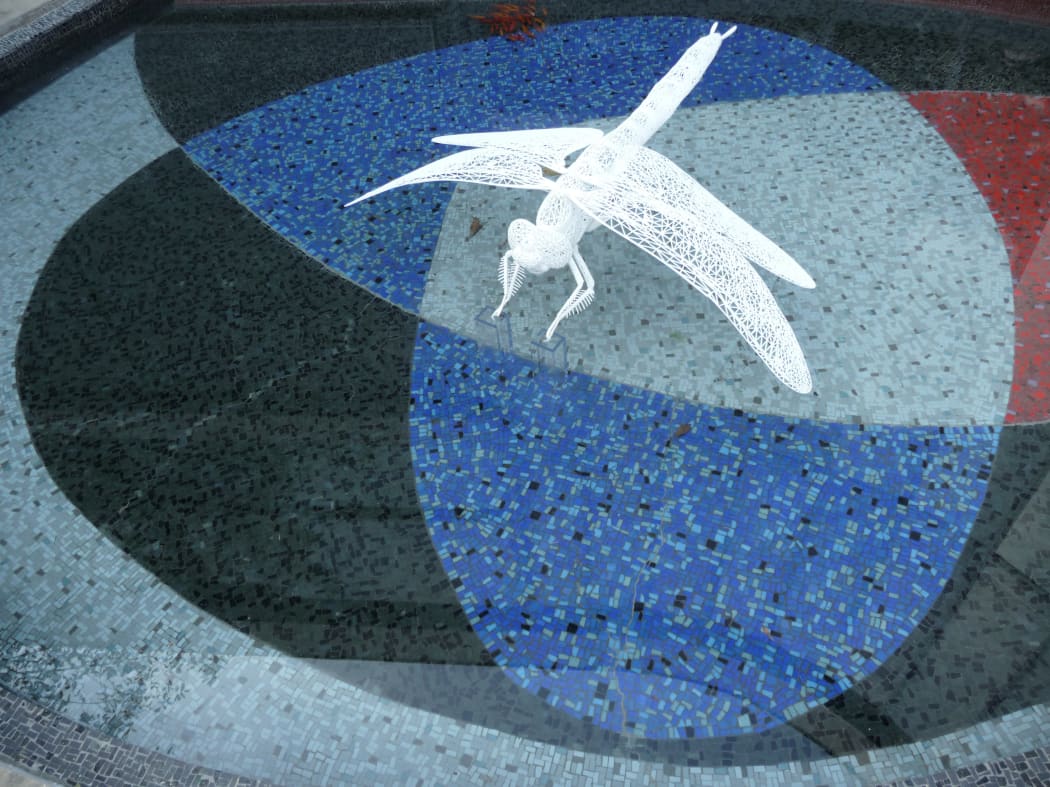
Through a series of seven sculpted white sticks on which an iconography related to tales and legends unfolds, Mathieu Briand develops a set of complex scenes, always related to childhood and its fears perpetually instilled by adults through stories that are a priori harmless read before bedtime, which he stages with new pictorial developments.
For example, the artist revisits the story of the Pied Piper of Hamelin, where the musician who derailed the city with his music, furious at not having been paid, returned and drove the children to their death by playing his instrument again. Here, rodents run on the stand, throwing themselves in at the top end and coming out at the bottom, in an infinite loop, all the more disturbing as some of them have mutated, sporting children's heads.
Elsewhere, in sometimes ambiguous scenes, it is wolves or ogres that attack the children, unless the latter get lost in labyrinthine mazes?
In addition to this installation is an enigmatic egg, symbolizing a child's bedroom, inside which he is found hanging from a tree, with a curious figure at his side.
Pilgrim's staff, shepherd's staff, wizard's staff?
Far from being insignificant, the stick is, on the contrary, one of those objects charged with temporal or spiritual powers, meanings, uses, codes, whose variety seems to be almost infinite, and the reading and interpretation just as much.
Sometimes it accompanies, sometimes it supports. At the same time receptacle and symbol of an experience, it becomes like a place on which a whole imaginary can potentially be projected; its multiple roles and meanings allow, thanks to the ornamental practice in particular, to make it an interesting support - even maintaining - the narration.
In an era subject to a generalized smoothing, the ensemble has a very dark tone, thus highlighting the often dramatic aspect of tales and legends. Above all, it is striking to see how the artist manages to insert himself into a form of ambiguity that is constitutive of these narratives, where dramas and other atrocities unfold on objects of perfect plasticity and immaculate whiteness. Objects that allow a form of extension of the narrative, telling stories where each person can project their fears and memories, and let the mind drift towards other territories.
For in addition to reintroducing here the part of personal experience contained in the stick, Mathieu Briand links it to fiction.
Indeed, as was often the case in his work, he engages in a back and forth movement between real and fictional, concrete and mental territories, all the more efficient as the legend has had concrete effects on everyone, as a child, in particular by maintaining real fears stemming from these tales, first and foremost the fear of the dark or the forest.
In his Psychoanalysis of fairy tales (1976), Bruno Bettelheim dealt, among other problems, with the need for the structuring of the child to integrate the principle of reality by gradually detaching himself from the principle of pleasure. These Legendary Sticks curiously echo this.
Frédéric BONNET
